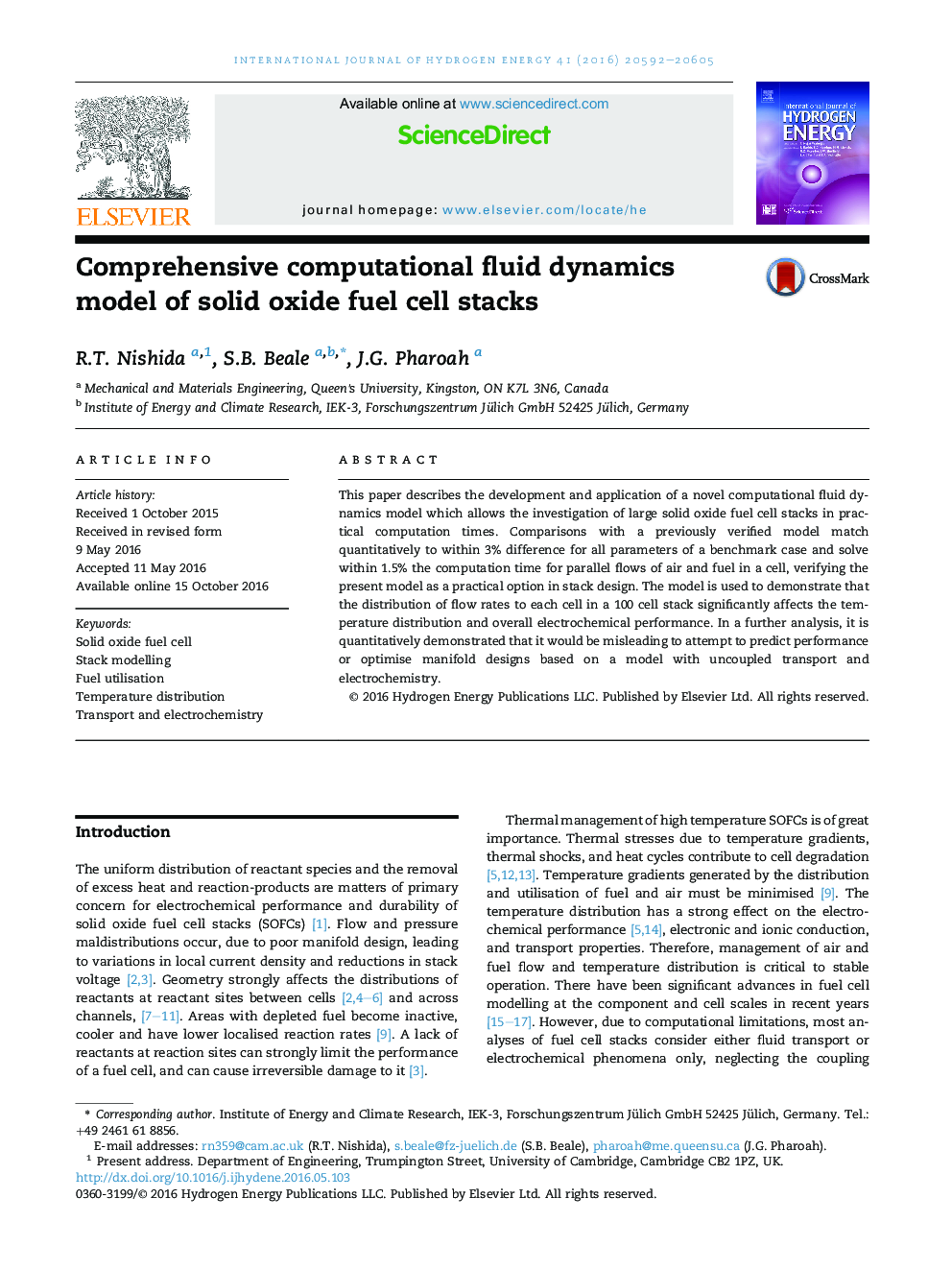| Article ID | Journal | Published Year | Pages | File Type |
|---|---|---|---|---|
| 5148154 | International Journal of Hydrogen Energy | 2016 | 14 Pages |
Abstract
This paper describes the development and application of a novel computational fluid dynamics model which allows the investigation of large solid oxide fuel cell stacks in practical computation times. Comparisons with a previously verified model match quantitatively to within 3% difference for all parameters of a benchmark case and solve within 1.5% the computation time for parallel flows of air and fuel in a cell, verifying the present model as a practical option in stack design. The model is used to demonstrate that the distribution of flow rates to each cell in a 100 cell stack significantly affects the temperature distribution and overall electrochemical performance. In a further analysis, it is quantitatively demonstrated that it would be misleading to attempt to predict performance or optimise manifold designs based on a model with uncoupled transport and electrochemistry.
Related Topics
Physical Sciences and Engineering
Chemistry
Electrochemistry
Authors
R.T. Nishida, S.B. Beale, J.G. Pharoah,
